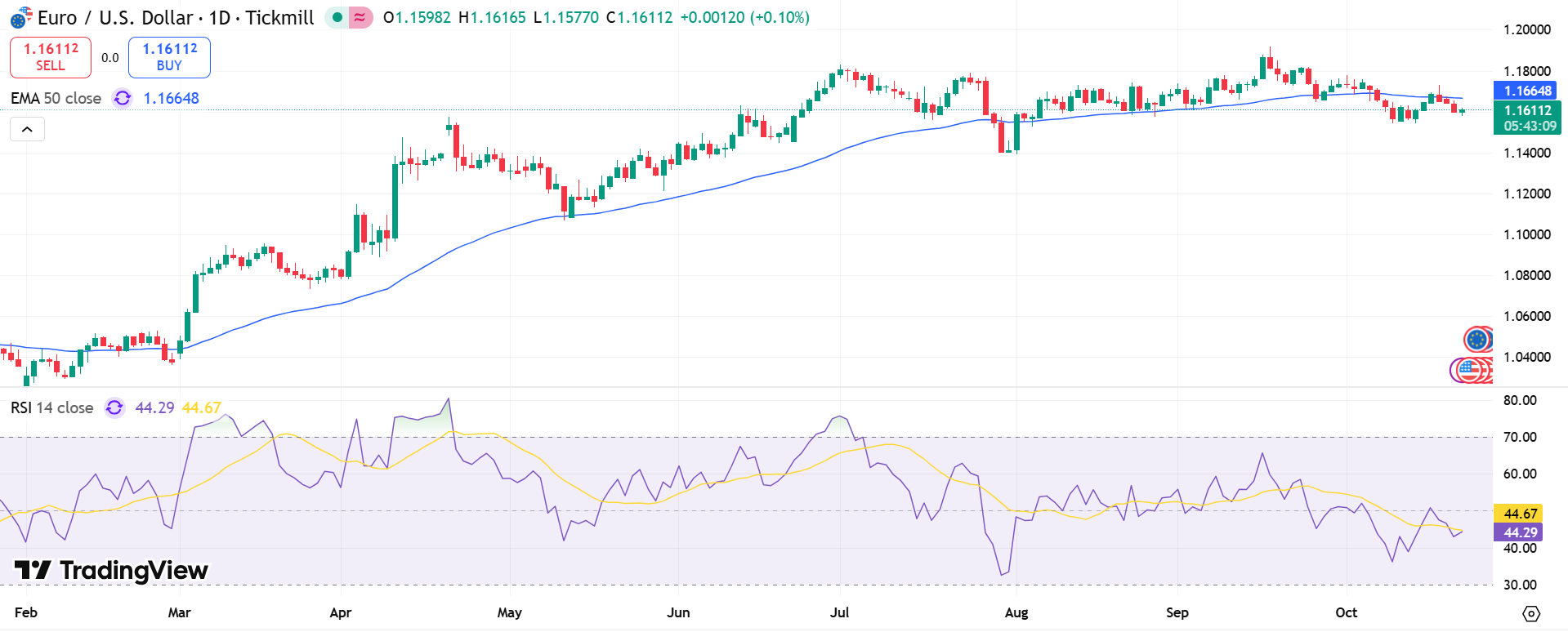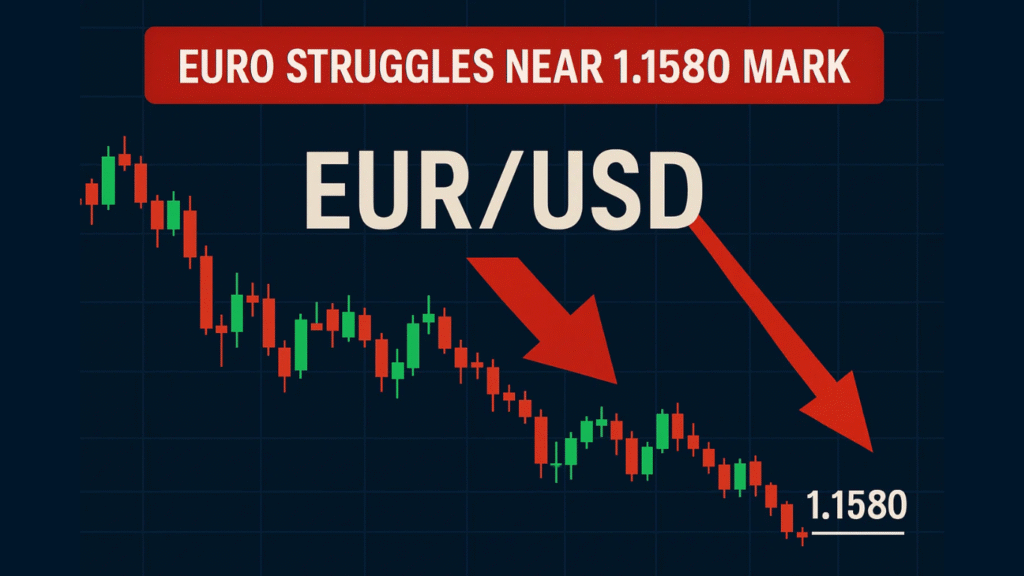The EUR/USD pair remained under pressure on Wednesday, slipping just below 1.1600 after three consecutive days of losses. A stronger U.S. Dollar (USD), supported by easing U.S.–China trade tensions, continues to weigh on the euro’s short-term recovery prospects.
At the time of writing, the pair trades near 1.1580, extending its weekly decline as markets favor the dollar amid renewed optimism about a potential de-escalation in trade disputes. However, progress in Europe remains muted, leaving the Euro (EUR) vulnerable to additional downside risk.
U.S. President Donald Trump added mixed signals to the narrative, saying he expects a “very successful” meeting with Chinese President Xi Jinping — though he admitted it “may not happen.” Markets largely brushed off his comments, focusing instead on the relative stability of the greenback.
Meanwhile, several European Central Bank (ECB) officials, including President Christine Lagarde, made public remarks earlier in the day but avoided direct discussion of monetary policy, providing little new direction for the euro.
Technical Indicators Point to Weakness
From a technical perspective, EUR/USD remains bearish, trading below both its 20-day and 100-day Simple Moving Averages (SMAs) — currently hovering around the 1.1650 region. The shorter SMA is on the verge of crossing beneath the longer one, a setup typically seen as a bearish crossover.
Momentum indicators remain tilted to the downside, showing limited buying interest and hinting at the potential for further declines.
Key levels to watch include:
- Support: 1.1540, 1.1510, and 1.1470
- Resistance: 1.1650, 1.1690, and 1.1740
On the 4-hour chart, technical indicators have eased from oversold conditions but continue to favor sellers. The pair has repeatedly rebounded from the 1.1540 level, marking it as a critical short-term support. A sustained break below that zone could open the door toward 1.1470, a historically strong support area.

Dollar Strength Likely to Persist
The U.S. Dollar Index (DXY) remains well-supported amid expectations of steady growth in the U.S. and reduced geopolitical uncertainty. With Federal Reserve (Fed) officials now in a blackout period ahead of next week’s FOMC meeting, traders are left to interpret data and sentiment-driven cues.
While short-term momentum favors the dollar, analysts caution that any softening in U.S. inflation or weaker consumer data could provide room for a limited euro rebound later this month. For now, however, the 1.1600 barrier continues to act as a ceiling for the pair’s recovery attempts.


